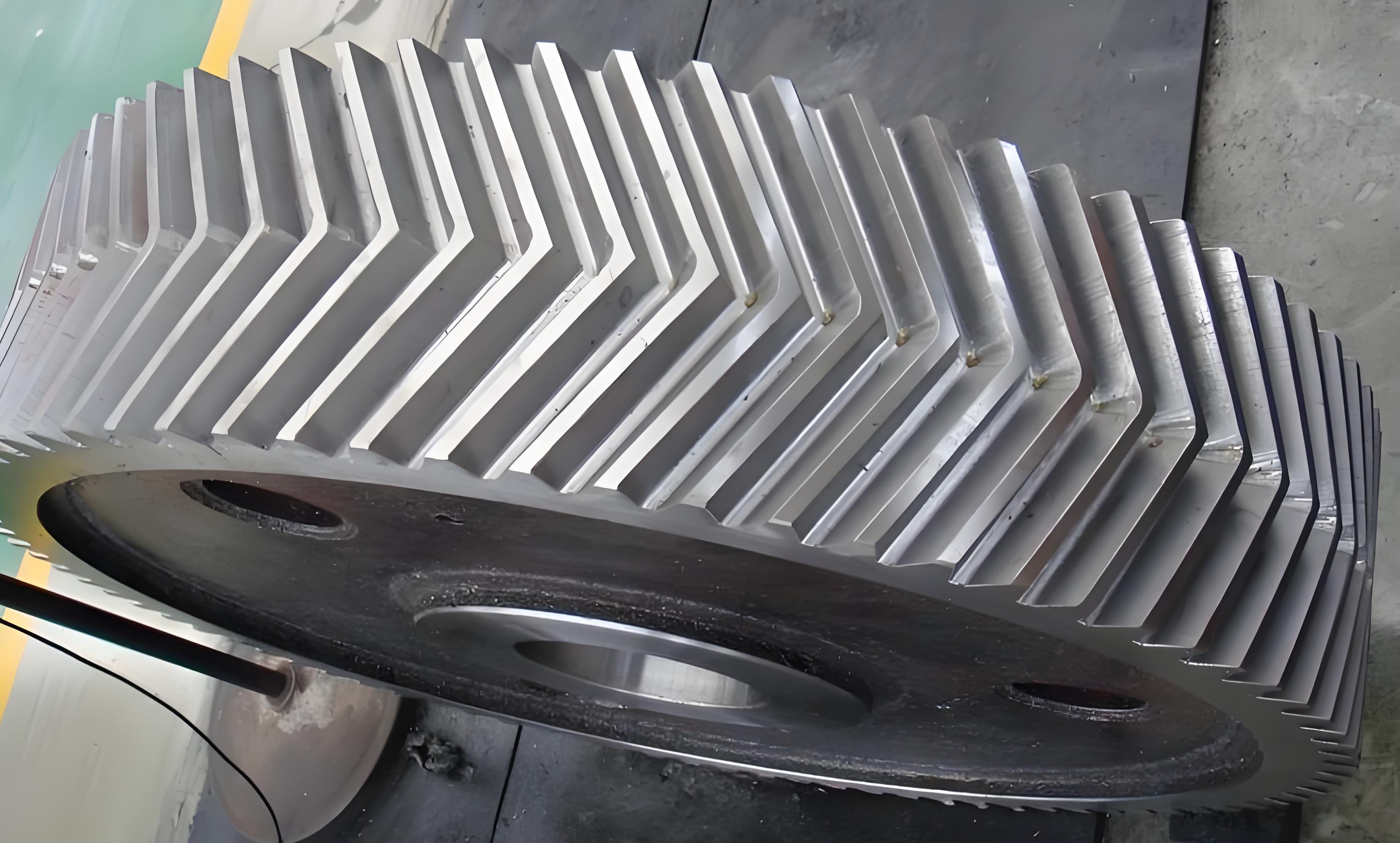Abstract
To reduce the windage power loss in herringbone gear transmission systems, an aerodynamic model of the internal air within the herringbone gear transmission system is established based on dynamic mesh technology. The airflow characteristics inside the gearbox are simulated and analyzed, exploring the influence of gear speed, the distance from wind screens and baffles to the addendum circle, the range of gears covered by the wind screen, and oil separators on the windage power loss on the gear surface.

1. Computational Model
1.1 Geometric Model
The herringbone gear transmission system primarily consists of a pair of herringbone gears, a wind screen at the top for drag reduction, bottom baffles, and oil separators. Among them, baffles 1 and 2 are distributed on both sides at the bottom of the driven gear, while baffles 3 and 4 are positioned elsewhere as illustrated.
<img src=”image_placeholder_for_geometric_model” />
Table 1: Components of the Herringbone Gear Transmission System
| Component | Description |
|---|---|
| Herringbone Gear Pair | The primary transmission components, featuring a herringbone tooth profile |
| Wind Screen | Located at the top, aims to reduce windage by directing airflow |
| Bottom Baffles | Distributed at the bottom, helping to manage and reduce airflow within the gearbox |
| Oil Separators | Devices used to separate oil from the airflow, aiding in lubrication and reducing drag |
2. Literature Review
2.1 Theoretical Research on Gear Windage Power
Researchers have conducted numerous studies on gear windage power, establishing experimental setups and analytical models. The following table summarizes some key findings:
Table 2: Key Findings on Gear Windage Power
| Reference | Research Focus | Key Findings |
|---|---|---|
| Anderson et al. | Individual straight gear windage tests | Analyzed changes in windage power loss with varying working pressure, air density, and rotational speed; provided empirical formulas |
| Massini et al. | – | Studied similar parameters and provided additional insights |
| Diab et al. | – | Further contributions to empirical formulas |
| Quiban et al. | Spiral bevel gear windage at 60 m/s | Studied windage power and provided an analytical formula |
| Ruzek et al. | Multi-stage gear transmission windage experiments | Found that energy from single gear windage can drive surrounding gears, resulting in system windage power loss slightly less than the sum of individual gear losses |
| Kodela et al. & Ruzek et al. | Gear windage power analysis models | Studied the impact of input speed on windage power loss, finding an increase with higher speeds |
2.2 Drag Reduction Design Research
Several studies have focused on drag reduction designs for gears, particularly through modifications to wind screens and baffles. The following table summarizes some key design improvements:
Table 3: Drag Reduction Design Improvements
| Reference | Improvement Focus | Results |
|---|---|---|
| Hidenori et al. | Modified bevel gear shrouds | Reduced windage power loss by 36% |
| Zhao Ning et al. | Outer edge and end face baffles | Effectively reduced windage power loss |
| Liang Zuobin et al. & Li Linlin et al. | Numerical models for single arcuate bevel gear windage power | Studied the impact of different wind screen structures; optimized designs through orthogonal experimental analysis |
| Bao Heyun et al. | Internal windage power calculation model for fan-driven gearboxes | Analyzed windage loss in herringbone planetary gears and the influence of planetary carrier characteristics; reduced fluid domain around planetary gears to lower windage power |
| Li et al. | Wind loss calculation model for single helical gear | Studied the impact of baffle arrangements on windage power; gear baffles were beneficial in reducing windage power loss |
3. Conclusion
The primary reason for windage loss in herringbone gears is the pressure difference moment on the tooth surface caused by alternating wind pressure loads during the meshing process. The windage power is positively correlated with the third power of gear speed. Increasing the range of gears covered by the wind screen and adding bottom oil separators can effectively reduce the fluid domain around the gear pair, lowering the total windage power. These findings contribute to the ongoing research and development of more efficient and energy-saving herringbone gear transmission systems.
